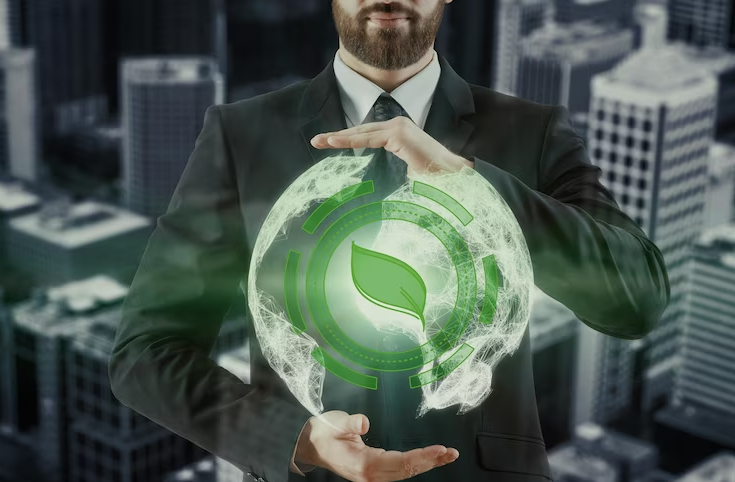
The urgent need for sustainable solutions to combat climate change has driven significant advancements in renewable energy and technological sustainability. From harnessing the power of solar and wind to developing energy-efficient technologies, the world is witnessing a transformative shift towards a more sustainable future. In this article, we will explore the latest innovations in renewable energy and technological sustainability, highlighting their impact on the environment, economy, and society.
Solar Power Revolution
Solar power has emerged as one of the most promising renewable energy sources, with continuous advancements in solar panel technology and energy storage systems. The development of more efficient photovoltaic cells, such as monocrystalline and thin-film solar panels, has significantly increased the conversion efficiency of sunlight into electricity. These advancements have made solar power more cost-effective and accessible, leading to widespread adoption.
Moreover, the integration of energy storage technologies, such as lithium-ion batteries, has enabled solar power to be harnessed and utilized even when the sun is not shining. This combination of solar panels and energy storage systems has revolutionized the way we generate and consume electricity, reducing our reliance on fossil fuels and mitigating greenhouse gas emissions.
In addition to traditional solar panels, new forms of solar technology are emerging. For example, transparent solar panels can be integrated into windows, allowing buildings to generate electricity while still allowing light to pass through. This innovation opens up new possibilities for renewable energy generation in urban areas.
Wind Energy Innovation
Wind energy has experienced remarkable growth in recent years, thanks to advancements in turbine technology and grid integration. The development of larger and more efficient wind turbines, coupled with improved control systems, has significantly increased the power output and reliability of wind farms. Offshore wind farms, in particular, have gained traction due to the availability of strong and consistent wind resources.
In addition, advancements in grid integration and energy management systems have addressed the intermittent nature of wind energy. Smart grid technologies enable better integration of wind power into the existing electrical grid, optimizing energy distribution and balancing supply and demand. By leveraging the power of wind, we can tap into a clean and abundant source of energy, reducing our dependence on fossil fuels and promoting a sustainable energy future.
Furthermore, researchers are exploring new approaches to wind energy, such as airborne wind energy systems. These systems utilize high-altitude wind currents to generate electricity using tethered drones or kites. This technology has the potential to unlock new wind energy resources and further expand the renewable energy capacity.
Energy Efficiency and Smart Technologies
Energy efficiency plays a crucial role in reducing energy consumption and minimizing environmental impact. Technological innovations have led to the development of energy-efficient appliances, smart thermostats, and intelligent lighting systems. These devices are designed to optimize energy usage, reduce wastage, and provide users with greater control over their energy consumption.
Smart technologies, such as Internet of Things (IoT) devices, enable interconnected systems that monitor and manage energy usage in real-time. For example, smart meters provide detailed information about energy consumption, allowing users to identify areas of improvement and make informed decisions to reduce their energy footprint. The integration of renewable energy sources with smart technologies creates a more sustainable and efficient energy ecosystem.
Additionally, artificial intelligence (AI) is being utilized to enhance energy efficiency in various applications. Machine learning algorithms can analyze energy consumption patterns and optimize energy usage based on real-time data. This enables the development of predictive maintenance systems, intelligent energy management systems, and smart grid optimization, ultimately improving overall energy efficiency.
Energy Storage Breakthroughs
The integration of renewable energy sources into the power grid has highlighted the importance of energy storage systems. Energy storage technologies allow us to capture and store excess energy generated from renewable sources for later use. Recent breakthroughs in energy storage, particularly in battery technologies, have revolutionized the renewable energy landscape.
Lithium-ion batteries, for instance, have become more efficient, durable, and cost-effective. These batteries are now being used to store energy at both residential and utility scales, providing backup power during outages and enabling better utilization of intermittent renewable energy sources. Additionally, emerging technologies such as flow batteries, hydrogen storage, and thermal energy storage offer promising solutions for long-duration energy storage, further enhancing the reliability and resilience of renewable energy systems.
Researchers are also exploring innovative approaches to energy storage, such as gravity-based systems. These systems use excess electricity to lift heavy weights, which can then be released to generate electricity when needed. This concept of gravity energy storage presents an environmentally friendly and cost-effective alternative to traditional battery storage.
Sustainable Technology Integration
Beyond renewable energy generation, sustainability in technology extends to the entire lifecycle of products, including design, manufacturing, and disposal. Sustainable practices such as eco-design, the use of recycled materials, and responsible electronic waste management are gaining traction in the tech industry. Companies are increasingly incorporating sustainability into their business strategies, aiming to reduce their environmental footprint and promote a circular economy.
Furthermore, sustainable technology integration goes hand in hand with the concept of smart cities. The use of intelligent systems and data analytics can optimize energy consumption, waste management, and transportation, making cities more efficient and environmentally friendly. By embracing sustainable technology practices, we can create a more resilient and sustainable future for generations to come.
Conclusion
Innovations in renewable energy and technological sustainability are driving significant progress towards a cleaner and more sustainable world. From solar power revolutionizing the way we generate electricity to wind energy becoming a major contributor to the grid, renewable energy sources are reshaping the energy landscape. The integration of energy-efficient technologies, smart systems, and sustainable practices further strengthens our commitment to sustainability.
As the global focus on mitigating climate change intensifies, continued research and development in renewable energy and technological sustainability will be crucial. By harnessing the power of innovation, collaboration, and conscious decision-making, we can create a future where clean and sustainable energy is accessible to all, paving the way for a more resilient and environmentally friendly planet.